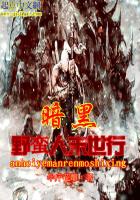From the "Red Mosque" I went to the great mosque of El-Azhar, to the wonderful mosque of Sultan Hassan, which unfortunately was being repaired and could not be properly seen, though the examination of the old portal covered with silver, gold, and brass, the general color- effect of which is a delicious dull green, repaid me for my visit, and to the exquisitely graceful tomb-mosque of Kait Bey, which is beyond the city walls. But though I visited these, and many other mosques and tombs, including the tombs of the Khalifas, and the extremely smart modern tombs of the family of the present Khedive of Egypt, no building dedicated to worship, or to the cult of the dead, left a more lasting impression upon my mind than the Coptic church of Abu Sergius, or Abu Sargah, which stands in the desolate and strangely antique quarter called "Old Cairo." Old indeed it seems, almost terribly old.
Silent and desolate is it, untouched by the vivid life of the rich and prosperous Egypt of to-day, a place of sad dreams, a place of ghosts, a place of living spectres. I went to it alone. Any companion, however dreary, would have tarnished the perfection of the impression Old Cairo and its Coptic church can give to the lonely traveller.
I descended to a gigantic door of palm-wood which was set in an old brick arch. This door upon the outside was sheeted with iron. When it opened, I left behind me the world I knew, the world that belongs to us of to-day, with its animation, its impetus, its flashing changes, its sweeping hurry and "go." I stepped at once into, surely, some moldering century long hidden in the dark womb of the forgotten past.
The door of palm-wood closed, and I found myself in a sort of deserted town, of narrow, empty streets, beetling archways, tall houses built of grey bricks, which looked as if they had turned gradually grey, as hair does on an aged head. Very, very tall were these houses. They all appeared horribly, almost indecently, old. As I stood and stared at them, I remembered a story of a Russian friend of mine, a landed proprietor, on whose country estate dwelt a peasant woman who lived to be over a hundred. Each year when he came from Petersburg, this old woman arrived to salute him. At last she was a hundred and four, and, when he left his estate for the winter, she bade him good-bye for ever. For ever! But, lo! the next year there she still was--one hundred and five years old, deeply ashamed and full of apologies for being still alive. "I cannot help it," she said. "I ought no longer to be here, but it seems I do not know anything. I do not know even how to die!" The grey, tall houses of Old Cairo do not know how to die. So there they stand, showing their haggard facades, which are broken by protruding, worm-eaten, wooden lattices not unlike the shaggy, protuberant eyebrows which sometimes sprout above bleared eyes that have seen too much. No one looked out from these lattices. Was there, could there be, any life behind them? Did they conceal harems of centenarian women with wrinkled faces, and corrugated necks and hands?
Here and there drooped down a string terminating in a lamp covered with minute dust, that wavered in the wintry wind which stole tremulously between the houses. And the houses seemed to be leaning forward, as if they were fain to touch each other and leave no place for the wind, as if they would blot out the exiguous alleys so that no life should ever venture to stir through them again. Did the eyes of the Virgin Mary, did the baby eyes of the Christ Child, ever gaze upon these buildings? One could almost believe it. One could almost believe that already these buildings were there when, fleeing from the wrath of Herod, Mother and Child sought the shelter of the crypt of Abu Sargah.
I went on, walking with precaution, and presently I saw a man. He was sitting collapsed beneath an archway, and he looked older than the world. He was clad in what seemed like a sort of cataract of multi- colored rags. An enormous white beard flowed down over his shrunken breast. His face was a mass of yellow wrinkles. His eyes were closed.
His yellow fingers were twined about a wooden staff. Above his head was drawn a patched hood. Was he alive or dead? I could not tell, and I passed him on tiptoe. And going always with precaution between the tall, grey houses and beneath the lowering arches, I came at last to the Coptic church.
Near it, in the street, were several Copts--large, fat, yellow- skinned, apparently sleeping, in attitudes that made them look like bundles. I woke one up, and asked to see the church. He stared, changed slowly from a bundle to a standing man, went away and presently, returning with a key and a pale, intelligent-looking youth, admitted me into one of the strangest buildings it was ever my lot to enter.














